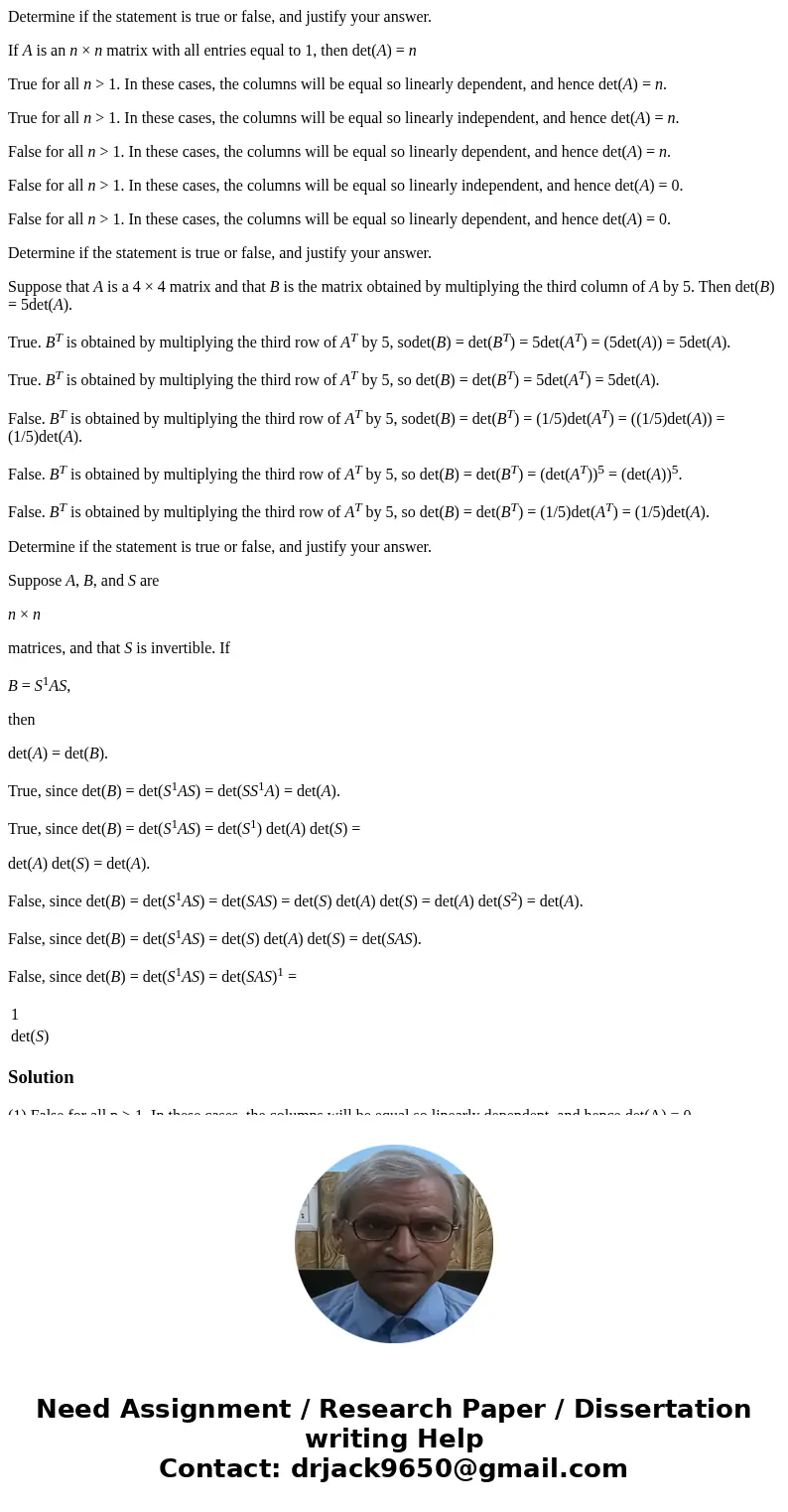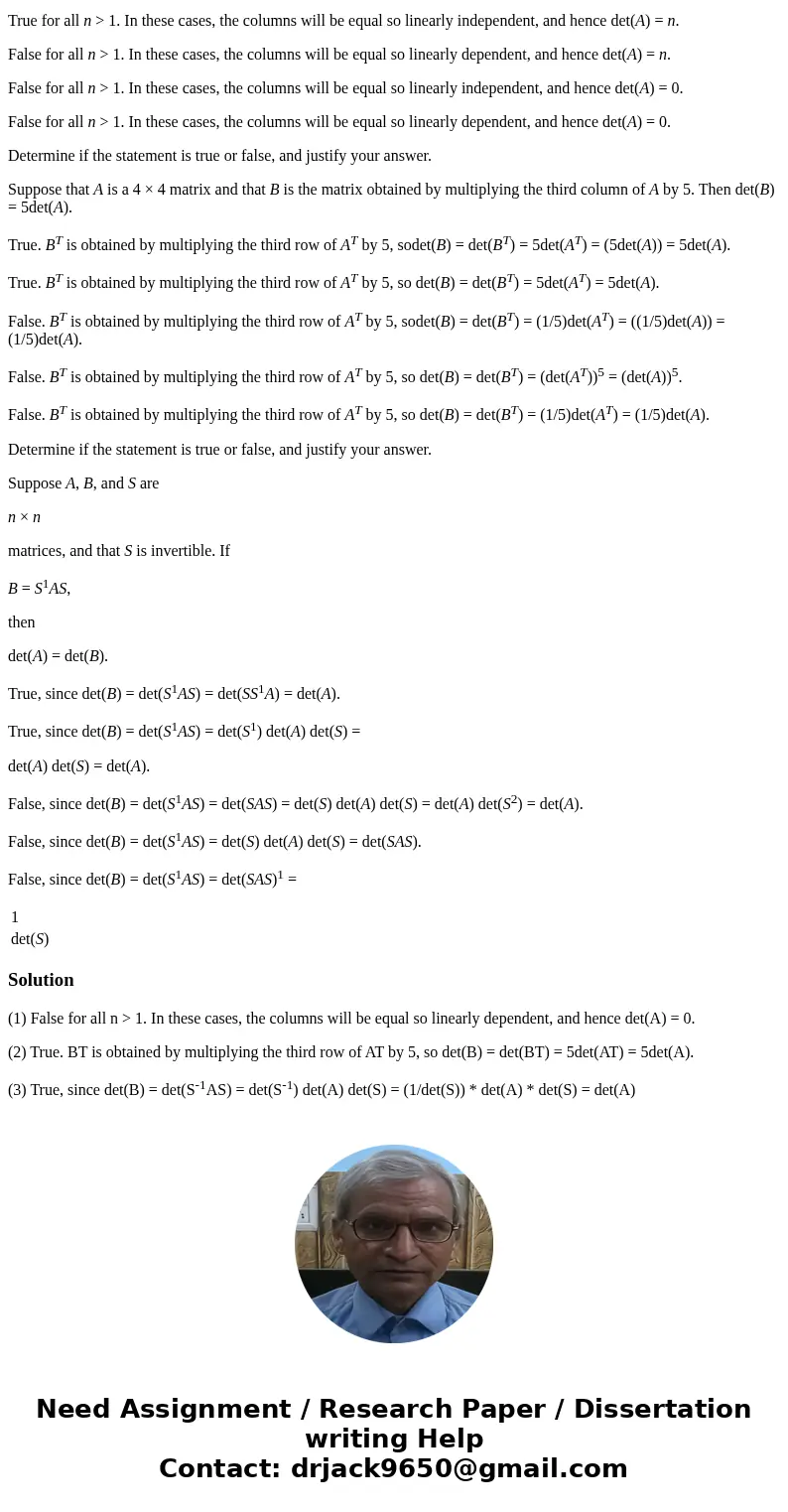Determine if the statement is true or false and justify your
Determine if the statement is true or false, and justify your answer.
If A is an n × n matrix with all entries equal to 1, then det(A) = n
True for all n > 1. In these cases, the columns will be equal so linearly dependent, and hence det(A) = n.
True for all n > 1. In these cases, the columns will be equal so linearly independent, and hence det(A) = n.
False for all n > 1. In these cases, the columns will be equal so linearly dependent, and hence det(A) = n.
False for all n > 1. In these cases, the columns will be equal so linearly independent, and hence det(A) = 0.
False for all n > 1. In these cases, the columns will be equal so linearly dependent, and hence det(A) = 0.
Determine if the statement is true or false, and justify your answer.
Suppose that A is a 4 × 4 matrix and that B is the matrix obtained by multiplying the third column of A by 5. Then det(B) = 5det(A).
True. BT is obtained by multiplying the third row of AT by 5, sodet(B) = det(BT) = 5det(AT) = (5det(A)) = 5det(A).
True. BT is obtained by multiplying the third row of AT by 5, so det(B) = det(BT) = 5det(AT) = 5det(A).
False. BT is obtained by multiplying the third row of AT by 5, sodet(B) = det(BT) = (1/5)det(AT) = ((1/5)det(A)) = (1/5)det(A).
False. BT is obtained by multiplying the third row of AT by 5, so det(B) = det(BT) = (det(AT))5 = (det(A))5.
False. BT is obtained by multiplying the third row of AT by 5, so det(B) = det(BT) = (1/5)det(AT) = (1/5)det(A).
Determine if the statement is true or false, and justify your answer.
Suppose A, B, and S are
n × n
matrices, and that S is invertible. If
B = S1AS,
then
det(A) = det(B).
True, since det(B) = det(S1AS) = det(SS1A) = det(A).
True, since det(B) = det(S1AS) = det(S1) det(A) det(S) =
det(A) det(S) = det(A).
False, since det(B) = det(S1AS) = det(SAS) = det(S) det(A) det(S) = det(A) det(S2) = det(A).
False, since det(B) = det(S1AS) = det(S) det(A) det(S) = det(SAS).
False, since det(B) = det(S1AS) = det(SAS)1 =
| 1 |
| det(S) |
Solution
(1) False for all n > 1. In these cases, the columns will be equal so linearly dependent, and hence det(A) = 0.
(2) True. BT is obtained by multiplying the third row of AT by 5, so det(B) = det(BT) = 5det(AT) = 5det(A).
(3) True, since det(B) = det(S-1AS) = det(S-1) det(A) det(S) = (1/det(S)) * det(A) * det(S) = det(A)


 Homework Sourse
Homework Sourse